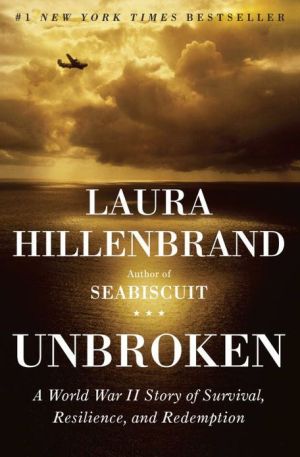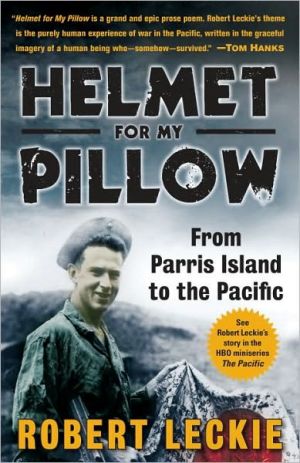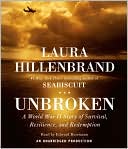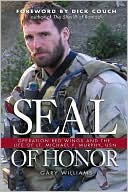Sea of Gray: The Around-the-World Odyssey of the Confederate Raider Shenandoah
The sleek, 222-foot, black auxiliary steamer Sea King left London on October 8, 1864, ostensibly bound for Bombay. The subterfuge was ended off the shores of Madeira, where the ship was outfitted for war. The newly christened CSS Shenandoah then commenced the last, most quixotic sea story of the Civil War: the 58,000-mile, around-the-world cruise of the Confederacy's second most successful commerce raider. Before its voyage was over, thirty-two Union merchant and whaling ships and their...
Search in google:
The sleek, 222-foot, black auxiliary steamer Sea King left London on October 8, 1864, ostensibly bound for Bombay. The subterfuge was ended off the shores of Madeira, where the ship was outfitted for war. The newly christened CSS Shenandoah then commenced the last, most quixotic sea story of the Civil War: the 58,000-mile, around-the-world cruise of the Confederacy's second most successful commerce raider. Before its voyage was over, thirty-two Union merchant and whaling ships and their cargoes would be destroyed. But it was only after ship and crew embarked on the last leg of their journey that the excursion took its most fearful turn.Four months after the Civil War was over, the Shenandoah's Captain Waddell finally learned he was, and had been, fighting without cause or state. In the eyes of the world, he had gone from being an enemy combatant to being a pirate—a hangable offense. Now fearing capture and mutiny, with supplies quickly dwindling, Waddell elected to camouflage the ship, circumnavigate the globe, and attempt to surrender on English soil. Publishers Weekly When the Union navy blockaded Southern ports during the Civil War, the Confederates dispatched commercial raiders to prey on private Union ships. One of these raiders was the C.S.S. Shenandoah, a British auxiliary steamer purchased by Confederate agents and refitted as a man-of-war. Chaffin (Pathfinder; Fatal Glory) recounts the Shenandoah's round-the-world journey in a compelling narrative based upon Civil War-era logbooks, journals, letters and memoirs. Commissioned to lay waste to New England's Pacific whaling fleet, the Shenandoah sailed from Liverpool in 1864. Thirteen months and 58,000 miles later, it sailed back. Along the way, the ship survived storms, ice jams and a near mutiny while capturing 40 Union vessels, taking 1,053 prisoners and destroying cargo valued in 1865 at $1.4 million. En route to the Bering Sea when the war ended in April 1865, the Shenandoah continued to fight until June for lack of " `reliable evidence.' " Thereafter, it dodged capture as it raced for the safety of a British port. Sure to satisfy Civil War and nautical fans, Chaffin's history describes these adventures in gratifying detail. (Feb.) Copyright 2005 Reed Business Information.
Chapter One Of Ice Floes and Arctic Fires It was just past 1:00 a.m., June 28, 1865, a few tilting spins of the earth beyond the year's longest day. And in the Bering Strait the hazy summer dawn breaking over the blue-white ice floes crowding its waters revealed a curious tableau: framed by the dark, distant, snow-crowned headlands to the east and west and, at a lower elevation, the two flat- and sheer-sided Diomede Islands tucked between those mainland heights, rose a forest of masts, sails, and rigging. Closer inspection revealed a listing three-masted whaleship. Moored to it by a web of radiating ropes bobbed five smaller vessels, the thirty-five-foot whaleboats that, on better days, the whaleship dispatched to harpoon the bowhead whales that brought white men to these remote climes. And, completing the scene, forming its outer perimeter, nine other whaling vessels swung at anchor in the eerily calm waters of this 37° F cloudless Arctic morning. A day earlier the winds that often slice through this storied icy gut dividing North America and Asia had roiled those waters; swells had blown the Brunswick—the now-listing ship from New Bedford, Massachusetts—against one of the ice floes. During the summer these chunks of ice drift northward from the Pacific to the Arctic through this fifty-mile-wide passage between Siberia's eastern and Alaska's western shores. The collision stove a hole below the Brunswick's waterline, breaching the wooden planking and the copper-alloy sheathing of her hull. Afterward the ship's officers and crew had done their best to still the rush of seawater into the ship's holds. But the ship's master, Alden T. Potter, knew that, with more than a thousand miles of water between them and the nearest shipyard, he and his crew had little hope of repairing the vessel. In the meantime, all he could do was what American captains had always done in such situations: raise Old Glory upside down to signal their distress to any ships that might sail by. This being a busy passage in a busy whaling season, nine other vessels, all flying the U.S. flag, soon lay anchored alongside the crippled Brunswick. As the other whaling vessels answering the Brunswick's distress flag arrived, each vessel's master—as captains of commercial ships are usually called—came aboard to survey the damage. And each, in turn, concurred that the listing ship was a lost cause. They also agreed with Captain Potter that his only recourse was to fall back on the general custom under the circumstances: condemn the ship and auction off her cargo, whaleboats, and whatever gear could be hauled off the vessel. At the least, the Brunswick's master could reduce some of the losses to his ship's owner and insurers. Decision made, they set to business and by the early morning of June 28 the auction had concluded. But as accounts were being squared and sailors from the nine other whaling vessels were busy removing barrels and crates from the crippled Brunswick, yet another ship hove into view, from the south. Observing the ship's three masts and the plume of smoke rising from her, the whaling masters immediately concluded that she was an auxiliary steamer—so called because she was propelled by both wind and a steam-engine powered iron-screw propeller. Such vessels were rare, if not unknown, in these waters and, as the ship drew closer and they could see that she was flying a U.S. flag, speculation turned to her identity. Some thought the ship might belong to the Western Union Telegraph Expedition, yet another expression of America's ongoing commercial expansion, which continued even as the country was rent by civil war. That year the Expedition was conducting surveys for a cable to be stretched across the Bering Strait; the project sought to create a communications link—by way of Canada, Alaska, and Asia—between the United States and Europe. Still others aboard the gathered whaleships speculated that the approaching steamship might be the Confederate raider that had, amid great controversy, stopped in Melbourne the previous winter. Over the past four years of war, the Confederates had dispatched at least twelve such cruisers into the world's oceans, charging them with destroying private, unarmed Union merchant, fishing, and whaling vessels. But the war was over. Weeks ago these sailors, when variously docked in San Francisco, Honolulu, and other ports, had read in newspapers that the war between the North and the South had ended nearly three months earlier. On April 9, Confederate general Robert E. Lee had surrendered the remnants of his Army of Northern Virginia to Union general Ulysses S. Grant at a place called Appomattox Courthouse, Virginia. This latter fact dispelled much of the whalemen's anxiety. And who knew? Perhaps the approaching steamer could provide the Brunswick's master and crew with passage out of this icy realm. Captain Jeremiah Ludlow of the Isaac Howland, one of the whaling vessels gathered around the Brunswick, agreed to carry Potter's request to the steamer. Dispatched in a whaleboat, he soon stood on the steamer's deck. Ludlow failed to learn the mystery ship's identity, and his reception by her officers had been a bit frosty. But they seemed to have expressed, albeit in vague language, a willingness to provide passage for Captain Potter and his men. Later that day spirits aboard the Brunswick and the nine vessels grouped around her rose still higher. The men had spotted a flotilla of five small boats, dispatched from the steamer, coming toward them. It seemed that the promised passage out of the Bering Strait was about to be delivered. But, as the boats came into clearer view, the sailors gathered on the decks of the awaiting whaleships noticed that the approaching craft carried uniformed Confederate navy officers. Moreover, almost simultaneously, the whaling seamen heard a warning shot fired in their direction from the steamer, and noticed that the Stars and Stripes that had been waving over her foremast had been hauled down. In its place rose the ensign of the Confederate navy. When the steamer had come within hailing range, one of the Confederates shouted to the men gathered on the decks of the ten whaling vessels: as of that moment, all of their ships and cargoes were prizes of the CSS Shenandoah. The Confederates ordered the more than three hundred men aboard the whaling vessels—each carried a crew of up to thirty-five—to surrender and come aboard the Shenandoah as prisoners of war. Failing that, they could go down with their vessels, all of which the Confederates threatened to destroy. Alarm rippled across the decks of the whalers. Officers who had assembled for the auction on the Brunswick's decks rushed back to their own vessels and began ordering their crews to weigh anchor and prepare to sail. Perhaps, they reasoned, if they could reach the nearby Siberian coast they would find diplomatic sanctuary inside Russian territory. It was a futile hope. Unusually for this season and place, it was a windless day: no sailing vessels would be going anywhere quickly. And, in the end, the whaleships' masters aboard their unarmed vessels had little choice but to comply with the Confederates, who, that day and for the past few weeks, had stubbornly refused to believe the reports that had reached them of the war's end. Indeed, the master of the William Thompson, one of the captured whalers, recalled that a Confederate officer "exultantly stated that he did not believe Lee had surrendered." As officers and men from the captured whalers began rowing to the Shenandoah, Confederate prize parties—small groups of seamen led by officers—commenced boarding the ten whaling vessels. Soon enough, the Confederates' plans became clear: two of the captured vessels, the James Maury and the Nile, would be "ransomed"—released after their masters had signed written promises stating that their vessels' owners would later pay the Confederate government a sum equal to the value of the vessels and their cargoes. Once the signatures were secured, those two vessels would be allowed to return to safe harbor in San Francisco. The eight others would be burned to the waterline and sunk. By 5:00 p.m. the prize parties from the Shenandoah were scurrying about all eight of the doomed vessels. In accordance with the Confederates' usual procedures, all crew members and living animals were removed from each ship. Likewise, all useful equipment, gunpowder, or stores were confiscated and taken back to the Shenandoah. Afterward, the parties searched the whaling vessels' holds for any available combustibles, including whale products, pitch, tar, and turpentine. These they spread throughout the vessels. Bulkheads, the upright walls compartmentalizing each vessel, were torn down and piled in cabins and forecastles; the bulkheads' destruction at once created fuel and improved draft for the fire to come. The Confederates then opened all the hatches and cut the rigging. With no wind, the sails hung limp and free. Finally, before leaving, the prize parties took fires from each of the eight ships' galley stoves and dispersed flames throughout the main decks and the holds. A Confederate officer aboard the Shenandoah who witnessed the conflagration recalled "a scene never to be forgotten by any one who beheld it." As flames consumed them, the eight crewless vessels drifted like crazed, rudderless ghost ships amid the ice floes. "The red glare from the eight burning vessels shone far and wide over the drifting ice of those savage seas; the crackling of the fire as it made its devouring way through each doomed ship fell on the still air like upbraiding voices." Chaos reigned: "The sea was filled with boats driving hither and thither, with no hand to guide them, and with yards, sails, and cordage, remnants of the stupendous ruin there progressing. In the distance, but where the light fell strong and red upon them, bringing out into bold relief each spar and line, were the two ransomed vessels, the Noah's Arks that were to bear away the human life which in a few hours would be all that was left of the gallant whaling fleet." Sixteen years after General Robert E. Lee's troops stacked their muskets at Appomattox Courthouse, the Confederacy's president, Jefferson Davis, recalled the events of mid-1865 from a decidedly different perspective than that experienced by those aboard the Shenandoah and her fleet of captive whaleships amid the Bering Strait's ice floes. In early April, as Union forces gathered outside Richmond, Virginia, the capital of the Confederacy, Davis—acting on advice from General Lee—had ordered the city's evacuation. By then, Lee's beleaguered Army of Northern Virginia, fleeing a Union advance, had marched west of Richmond, hoping to escape and fight another day. Davis and his cabinet, meanwhile, took a southwest train for Danville, Virginia. There Davis lingered long enough to issue a proclamation calling for continued resistance to Union forces. With Yankee troops hard on his heels, he then drifted farther and farther south: through Virginia's fields and leafy forests, into North Carolina, South Carolina, and eventually Georgia. As Davis's scattered generals—Lee, Joseph Johnston, and Richard Taylor, among others—one after another, laid down their arms, the fifty-six-year-old president, deep into spring, still nourished stubborn hopes. If he could somehow link up with Southern troops still in the field, perhaps those in Texas under General Edmund Kirby Smith, he and his brethren in gray might reconstitute themselves as a guerrilla movement. And, if they could do that, who knew how long the Confederacy might be able to fight on? Perhaps long enough to exhaust a war-weary Northern public. On May 10, Davis's luck, and with it his dreams, ran out: Union soldiers in Irwinville, Georgia, finally caught up with and arrested him. Three weeks later, General Smith's forces in Texas surrendered; and on June 23, the Cherokee chief and Confederate general Stand Watie, aware of Smith's surrender, accepted the inevitable. He galloped into the tiny Indian Territory hamlet of Fort Towson—in today's Oklahoma—and surrendered his battalion of Cherokee, Seminole, and Osage Indians to Union forces. The Confederacy had officially become a lost cause. Even so, as former Confederate president Davis, now Union prisoner, recalled in his memoirs, one thought did bring him solace: "the Confederate flag no longer floated on land, but one gallant sailor still unfurled it on the Pacific"—"Captain Waddell, commanding the Shenandoah cruiser." Then, en route to the Bering Sea, Waddell and his crew had been ignorant of the comfort their efforts lent their stateless president. Nor, for that matter, as they later claimed, did they know that, by then, they sailed without state or purpose. But just as war will have its heroes and its tragedies, so, inevitably, will it have its ironies. That the task of firing the final shot associated with that entire four-year ordeal of death and destruction fell to Waddell and the men of his Shenandoah was surely one of them. Excerpted from Sea of Gray: The Around-the-World Odyssey of the Confederate Raider Shenandoah by Tom Chaffin. Copyright © 2006 by Tom Chaffin. Published in May 2007 by Hill and Wang, a division of Farrar, Straus and Giroux, LLC. All rights reserved.
1Of ice floes and Arctic fires32"A good, capital ship in every respect"193Black cruiser on a Thames night354Las Desertas445"A bucket of sovereigns"556Crossing the royal yards677King Neptune's court868Breezing up1099"A decidedly Recherche affair"13910"The old sea dogs chuckled"15611"Doubtful shoals"17312Ascension island19013Pacific spring21214Sea of Okhotsk22615Bering Sea24516The hardest blow against Yankee commerce26817"A sort of choking sensation"28118"Long gauntlet to run"305
\ Publishers WeeklyWhen the Union navy blockaded Southern ports during the Civil War, the Confederates dispatched commercial raiders to prey on private Union ships. One of these raiders was the C.S.S. Shenandoah, a British auxiliary steamer purchased by Confederate agents and refitted as a man-of-war. Chaffin (Pathfinder; Fatal Glory) recounts the Shenandoah's round-the-world journey in a compelling narrative based upon Civil War-era logbooks, journals, letters and memoirs. Commissioned to lay waste to New England's Pacific whaling fleet, the Shenandoah sailed from Liverpool in 1864. Thirteen months and 58,000 miles later, it sailed back. Along the way, the ship survived storms, ice jams and a near mutiny while capturing 40 Union vessels, taking 1,053 prisoners and destroying cargo valued in 1865 at $1.4 million. En route to the Bering Sea when the war ended in April 1865, the Shenandoah continued to fight until June for lack of " `reliable evidence.' " Thereafter, it dodged capture as it raced for the safety of a British port. Sure to satisfy Civil War and nautical fans, Chaffin's history describes these adventures in gratifying detail. (Feb.) Copyright 2005 Reed Business Information.\ \ \ \ \ Library JournalA true-life adventure: how The Sea King left Liverpool, became the CSS Shenandoah, sank 34 Union ships, and once the Civil War ended was branded a pirate ship, with the crew fleeing `round the world in search of a safe haven. Copyright 2005 Reed Business Information.\ \ \ Kirkus ReviewsA saga of secessionists on the high seas, causing mayhem wherever they wandered. The Shenandoah began life as a Scottish commercial vessel called the Sea King, but, as Chaffin (Pathfinder, 2002) notes, became one of the finest ships in the Confederate navy. Acquired in October 1864-instrumental in the acquisition was Theodore Roosevelt's uncle, a Georgian named James Bulloch, who later "played a major role in convincing the future U.S. president of the priority of attaining global naval superiority for America"-the Shenandoah was technologically advanced, with a screw propeller as well as tall sails. Commanded by James Waddell, it was also, technically, a privateer, a pirate ship with a letter of marque. Privateering was by then out of favor among the European powers, but the U.S. government had refused to sign a treaty banning it (think Kyoto Protocol), a decision that would haunt Yankee sailors when the Shenandoah circumnavigated the globe, sank 34 Union vessels and seized cargoes worth more than $1.4 million. The captain's loyalties remained so strong, Chaffin writes, that the ship went on attacking Union vessels even after Lee surrendered at Appomattox, when it dawned on Waddell, then off the Siberian coast, that he'd better get ship and crew back to the more or less friendly waters of England before the Yankees caught up. Chaffin does a good job of charting the Shenandoah's path and fortunes, and though the narrative could have stood a little trimming here and there, he makes it clear that there were plenty of worse places to be in the war than on the ship's decks; the officers had time to read the many books they liberated from enemy vessels, while the crew, for all its rebelorthodoxy, merrily disported themselves among the dark women of Ascension, unrepentant pirates to the last. Good reading for Civil War buffs, taking the naval aspect of the conflict well beyond the usual Monitor and Merrimac fare.\ \








